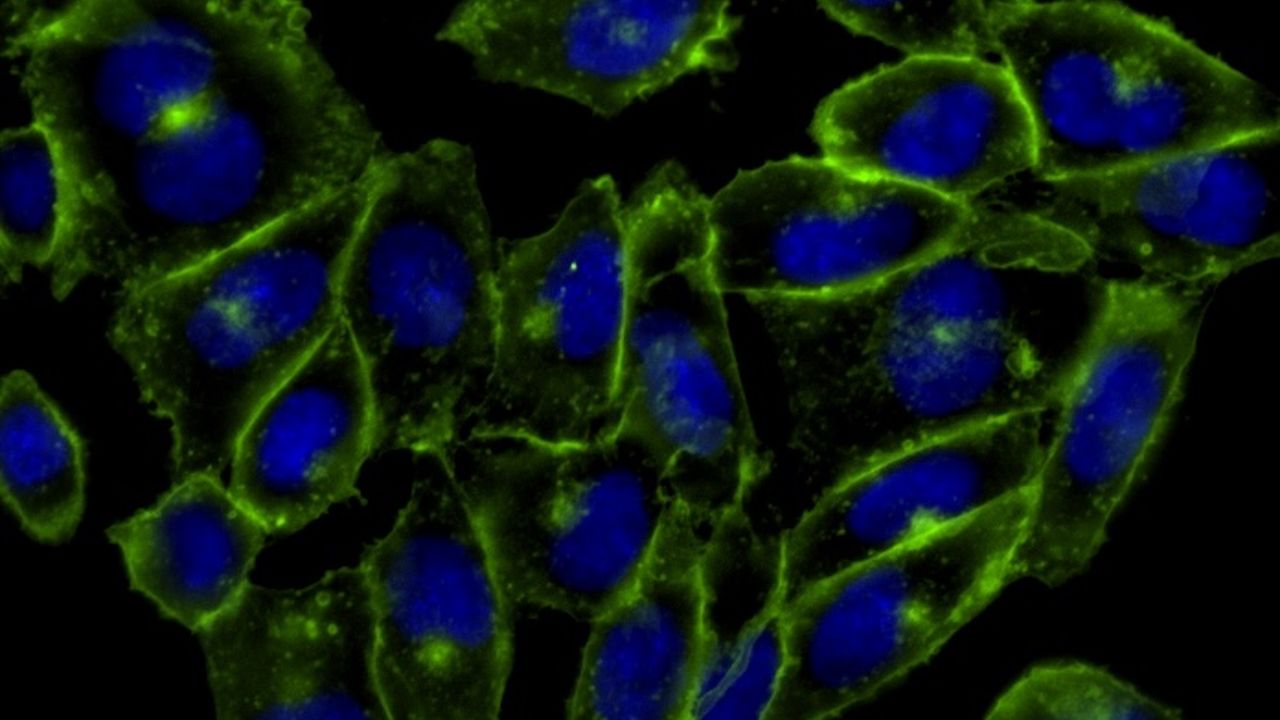Science
Scientists Unlock Real-Time Visualization of Molecules in Living Organisms

A team of scientists led by Carolyn Bertozzi at the University of California, Berkeley, has made a significant breakthrough in the field of biochemistry. On October 23, 2007, they published a paper detailing a novel method that allows researchers to visualize molecules within living organisms in real time. This advancement has profound implications for understanding complex biological processes and could revolutionize fields such as drug discovery and disease research.
The foundation of this new technique lies in what is known as click chemistry, a concept originally pioneered by chemists K. Barry Sharpless and Morten Meldal. Click chemistry simplifies the process of building complex biological molecules by enabling scientists to join smaller molecular units together rapidly and efficiently. Traditional methods for synthesizing biological molecules often involve cumbersome multi-step processes that can produce unwanted byproducts, making them unsuitable for large-scale applications, particularly in pharmaceuticals.
Bertozzi’s team faced a particular challenge: the catalyst, copper, used in many click chemistry reactions, is toxic to living cells. To address this, Bertozzi revisited previous research and discovered a way to modify the reaction to eliminate the need for copper. By forcing the alkyne component into a ring shape, they found that azide and alkyne could react without harmful catalysts. In 2004, Bertozzi’s team demonstrated this innovative approach by successfully attaching azide molecules to living cells without causing harm.
In their 2007 study, Bertozzi and her colleagues utilized this bioorthogonal click chemistry to visualize glycans—carbohydrate molecules that play crucial roles in cell signaling and disease processes. They incorporated a modified carbohydrate molecule with azide into the glycans of living hamster cells. By introducing a ring-shaped alkyne molecule linked to a green fluorescent protein, they enabled the azide and alkyne to react, resulting in the glowing protein that illuminated the presence of glycans within the cells.
Bertozzi coined the term “bioorthogonal” to describe this click chemistry because it does not interfere with the biological functions within the cells. This groundbreaking technique has facilitated a deeper understanding of how small molecules interact within living organisms, leading to applications such as tracking glycans in zebrafish embryos and studying how cancer cells evade immune detection through sugar molecules.
The implications of click chemistry extend beyond visualization. It has significantly accelerated the drug discovery process by providing a reliable method for synthesizing and studying biomolecules. The versatility and efficiency of this approach have made it invaluable in various scientific fields.
In recognition of their pioneering work, Sharpless, Meldal, and Bertozzi were awarded the Nobel Prize in Chemistry in 2022. Their contributions not only represent a milestone in chemistry but also open new avenues for research in medicine and biology. The ability to visualize and manipulate molecules within living cells marks a transformative step in our understanding of life at the molecular level. This research continues to inspire further innovations that could lead to breakthroughs in treating diseases and advancing biochemistry as a whole.
-

 Technology5 months ago
Technology5 months agoDiscover the Top 10 Calorie Counting Apps of 2025
-

 Health2 months ago
Health2 months agoBella Hadid Shares Health Update After Treatment for Lyme Disease
-

 Health3 months ago
Health3 months agoErin Bates Shares Recovery Update Following Sepsis Complications
-

 Technology4 months ago
Technology4 months agoDiscover How to Reverse Image Search Using ChatGPT Effortlessly
-

 Technology1 month ago
Technology1 month agoDiscover 2025’s Top GPUs for Exceptional 4K Gaming Performance
-

 Technology2 months ago
Technology2 months agoElectric Moto Influencer Surronster Arrested in Tijuana
-

 Technology5 months ago
Technology5 months agoMeta Initiates $60B AI Data Center Expansion, Starting in Ohio
-

 Technology5 months ago
Technology5 months agoRecovering a Suspended TikTok Account: A Step-by-Step Guide
-

 Health4 months ago
Health4 months agoTested: Rab Firewall Mountain Jacket Survives Harsh Conditions
-

 Lifestyle5 months ago
Lifestyle5 months agoBelton Family Reunites After Daughter Survives Hill Country Floods
-

 Technology4 months ago
Technology4 months agoHarmonic Launches AI Chatbot App to Transform Mathematical Reasoning
-

 Technology3 months ago
Technology3 months agoUncovering the Top Five Most Challenging Motorcycles to Ride



















